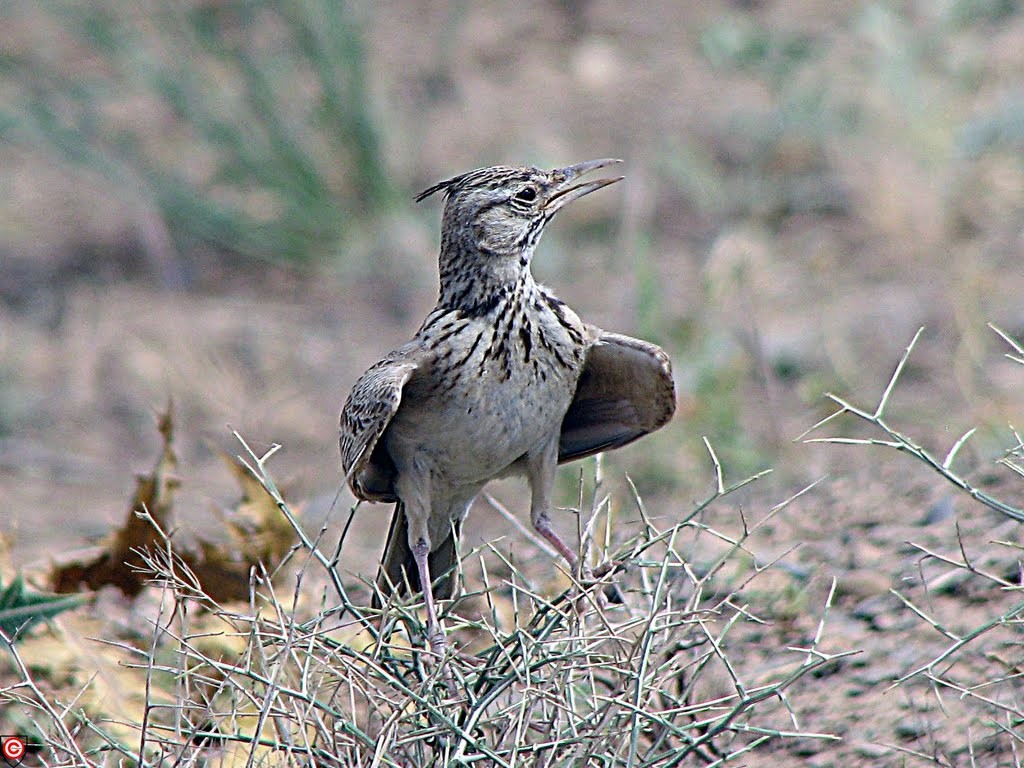Crested Lark
A species of Large-billed Lark and Crested Lark Scientific name : Galerida cristata Genus : Large-billed Lark and Crested Lark
Crested Lark, A species of Large-billed Lark and Crested Lark
Botanical name: Galerida cristata
Genus: Large-billed Lark and Crested Lark
Content
Description General Info
Description
A fairly small lark, the crested lark is roughly the same size as a Eurasian skylark, but shorter overall and bulkier around the head and body, and very similar in appearance, with a height of 17 cm (6.7 in) and a wingspan of 29 to 38 cm (11 to 15 in), weighing between 37 and 55 g (1.3 and 1.9 oz). It is a small, brown bird which has a short tail with light brown outer feathers. Male and females have no real differences, but young crested larks have more spots on their back than their older counterparts. Its plumage is downy but sparse and appears whitish. The distinct crest from which the crested lark gets its name is conspicuous at all times but is more pronounced during territorial or courtship displays and when singing. In flight it shows reddish underwings. It shares many characteristics with the Thekla lark, with the main distinctions between the two being the beak, the Thekla's heavier black-brown streaks and its grey underwing, present in European specimens. 
Size
19 cm
Colors
Brown
Bronze
Gray
Life Expectancy
1-5 years
Nest Placement
Ground
Feeding Habits
Crested Lark consumes a diet of grains, seeds, and insects like beetles, foraging from the ground or excavating them. Both parents feed the young, who forage early.
Habitat
The crested Lark thrives in arid, open landscapes, favoring environments with sparse vegetation, such as plains, semi-deserts, and steppes. It requires habitats with substantial bare ground or dry pastures, typically around 50% of the area. This species is widespread across temperate Eurasian regions and Africa, inhabiting open farmed lands, dry grasslands, and human-altered areas including roadsides and industrial zones.
Dite type
Granivorous
General Info
Feeding Habits
Bird food type
Sounds
Call
Recording location: Belgium
Song
Recording location: Belgium
Song
Recording location: Belgium
Behavior
The crested lark is a songbird, and has a liquid, warbling song described onomatopoeically as a whee-whee-wheeoo or a twee-tee-too. It sings in flight from high in the sky, at roughly 30 to 60 m (98 to 197 ft) above the ground. The related Eurasian skylark exhibits similar behaviour but also sings during its ascent, whereas the crested lark sings either at altitude or on the ground. Their flight pattern is an example of undulatory locomotion. 
Distribution Area
The crested lark breeds across most of temperate Eurasia from Portugal to north-eastern China and eastern India, and in Africa south to Niger. It is non-migratory, and the sedentary nature of this species is illustrated by the fact that it is only a very rare vagrant to Great Britain, despite breeding as close as northern France. While the bird is not commonly found in Scandinavia today, it could be found in Sweden until the 1990s, with sources reporting six individual birds in 1992 before becoming extirpated in Sweden in 1993. The birds have also been extirpated in several other European countries, including Norway (1972), Luxembourg (1973) and Switzerland (1980s). This is a common bird of dry, open country and is often seen by roadsides or in cereal fields, although it is also found occupying small, sandy patches by railways, docks and airfields. 
Species Status
Not globally threatened.
